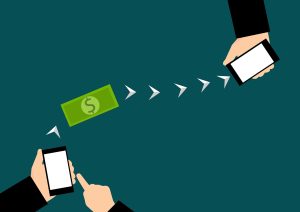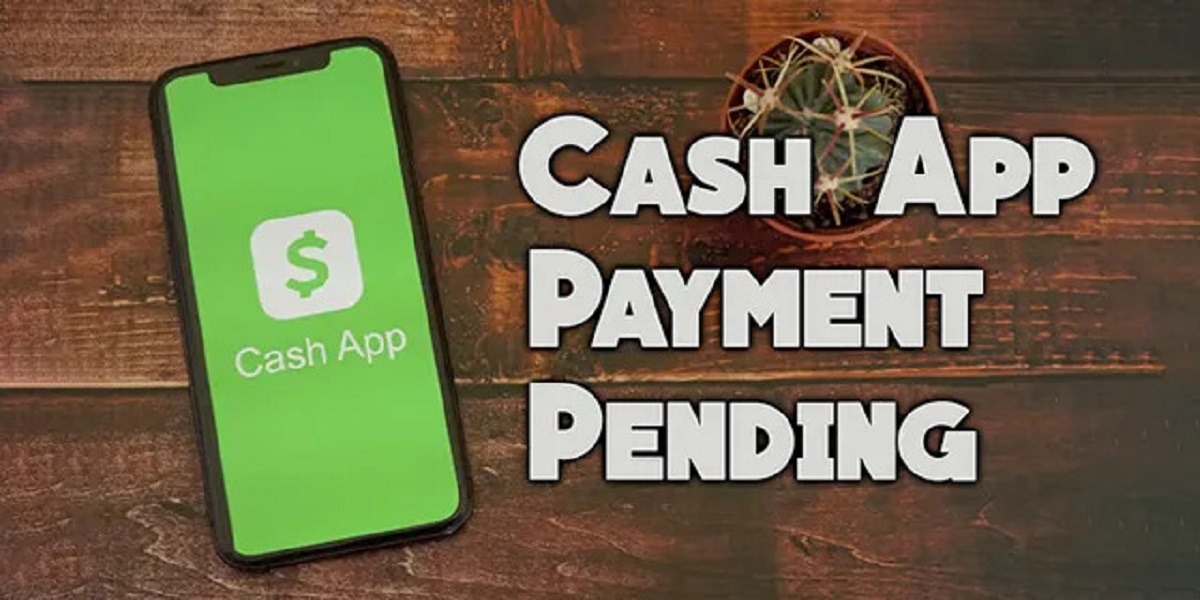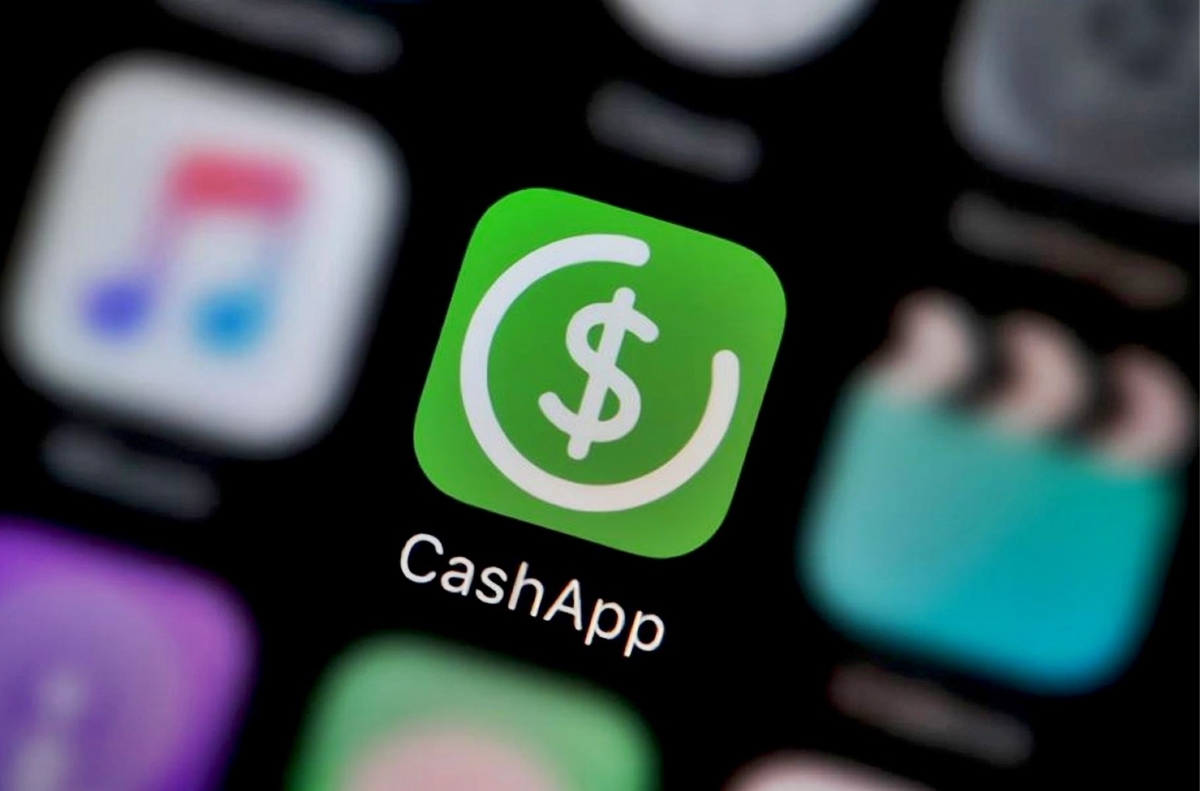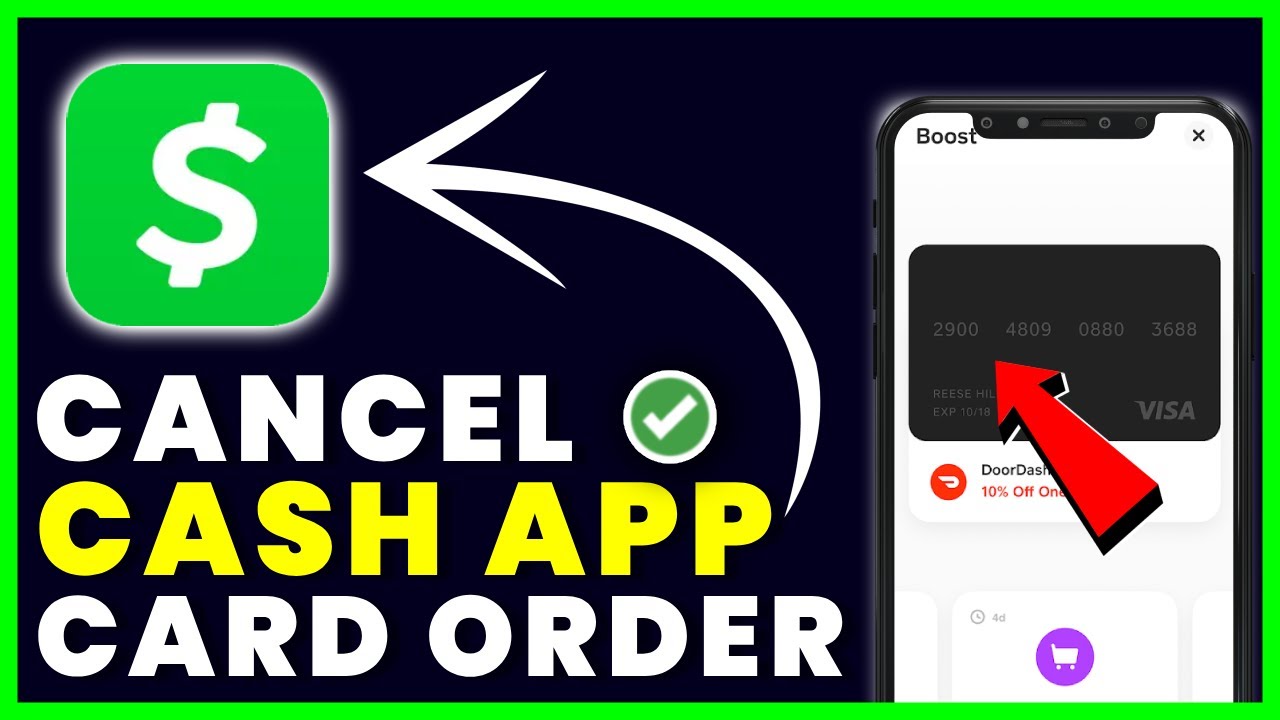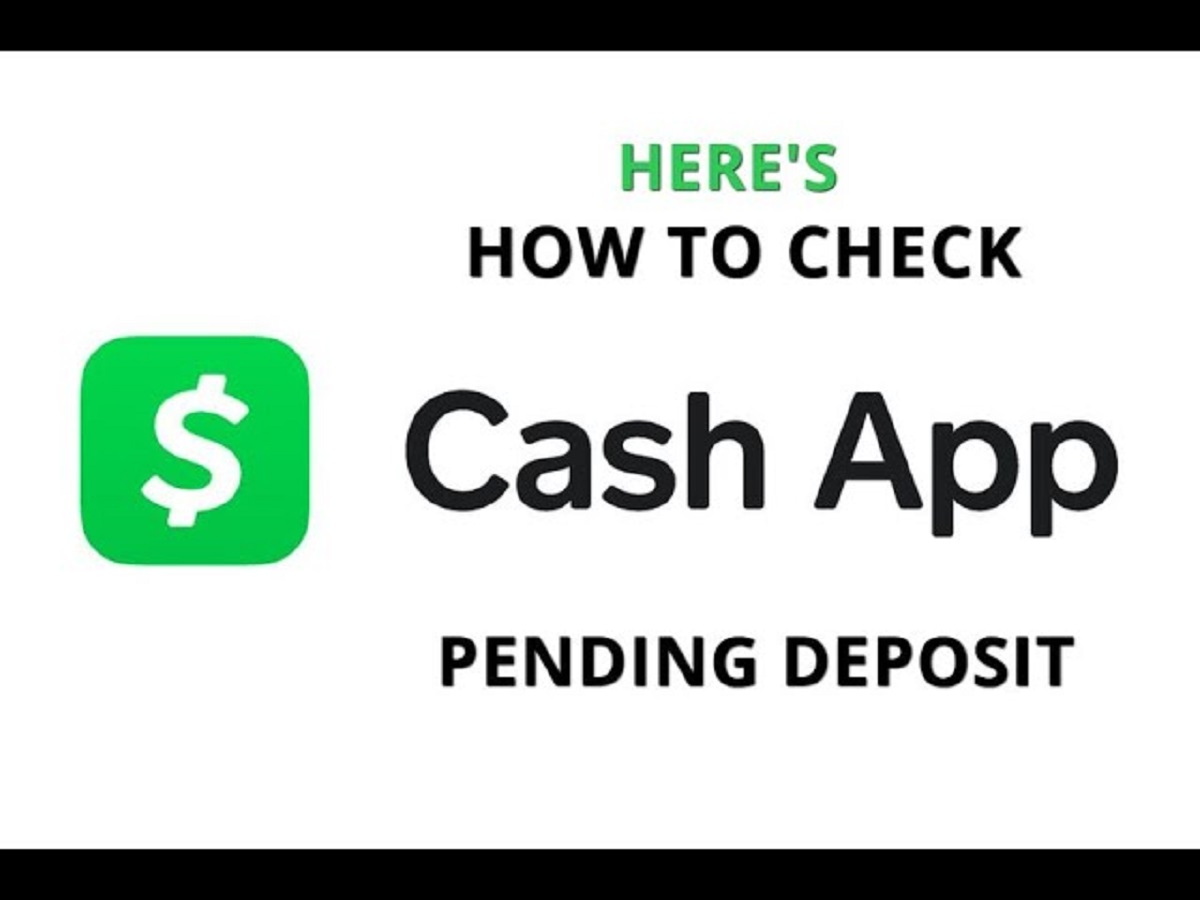Introduction
Welcome to the fascinating world of Cash App, a popular mobile payment service that allows users to send and receive money with just a few taps on their phone. With its user-friendly interface and seamless transaction process, Cash App has become a go-to platform for millions of people to handle their finances quickly and effortlessly.
However, as with any financial application, it is essential to understand the various features and terminologies that come with it. One such term that often confuses users is “pending.” If you have noticed the word “pending” associated with a transaction on Cash App, you might be wondering what it means and how it affects your money. This article aims to shed light on the concept of pending transactions and guide you through the process of resolving them.
Whether you are a regular Cash App user or someone who is contemplating using the app, understanding the implications of pending transactions is crucial. It allows you to have a clear picture of the transactional status and ensures that your money is moving as intended.
In the following sections, we will explore what “pending” means on Cash App, common reasons for pending transactions, how long they stay in the pending state, and steps to resolve them. We will also provide some valuable tips to help you avoid pending transactions in the future. So, let’s dive into the intricacies of Cash App and discover the answers to your pending transaction queries!
Understanding Cash App
Cash App, developed by Square Inc., is a mobile payment service that allows users to send and receive money instantly. With its simple and intuitive interface, Cash App has gained immense popularity, especially among the younger generation. The app offers a range of features, including sending and receiving money, making purchases, and even investing in stocks and Bitcoin.
One of the key reasons for Cash App’s widespread adoption is its user-friendly design. It doesn’t require any complex paperwork or lengthy verification processes. Users can download the app, link it to their bank account or debit card, and start sending and receiving money within minutes.
Once you have set up your Cash App account, you can easily navigate through the various options available. The home screen displays your available balance, recent transactions, and a button to send or request money. You can simply enter the recipient’s Cash App username or their mobile number or scan their unique QR code to initiate a transaction.
Another noteworthy feature of Cash App is its Cash Card. The Cash Card is a Visa debit card that is linked to your Cash App balance. This allows you to use the funds in your Cash App account for everyday purchases at any store that accepts Visa cards. The Cash Card is customizable, and users can choose from various designs to personalize their card.
Additionally, Cash App offers the ability to buy and sell stocks and Bitcoin. This feature, known as Cash App Investing, enables users to invest in a variety of stocks listed on major exchanges. With the Bitcoin feature, users can buy, sell, and store cryptocurrencies directly within the app.
Overall, Cash App provides a convenient and secure way for users to manage their finances, send money to friends and family, make purchases, and even explore investment opportunities all in one place. Now that we have a basic understanding of Cash App, let’s move on to unraveling the meaning of “pending” transactions.
What Does “Pending” Mean?
If you’ve come across the term “pending” while using Cash App, it refers to the status of a transaction that has been initiated but has not yet been completed. In simple terms, a pending transaction is one that is still in progress and has not been fully processed.
When a transaction is marked as pending on Cash App, it means that the app is in the process of verifying and confirming the transaction details. This verification process ensures that the transaction is legitimate and that there are sufficient funds in your account to cover the transaction amount.
During this pending phase, the transaction has not been deducted from the sender’s account or added to the receiver’s account. It is essentially in a temporary state of limbo until it is either approved or declined.
It is important to note that pending transactions on Cash App are not exclusive to money transfers. They can also apply to other types of transactions on the app, such as buying stocks or Bitcoin. In these cases, a pending transaction indicates that your purchase or investment order is being processed and confirmed by the relevant financial institution or market exchange.
Understanding the meaning of pending transactions is crucial because it provides transparency and visibility into the progress of your transaction. By knowing that a transaction is pending, you are aware that it has not yet been completed and can anticipate when the funds will be deducted from your account or received by the recipient.
Now that we know what “pending” means in the context of Cash App, let’s explore some common reasons why transactions may be in a pending state.
Common Reasons for Pending Transactions
There are several common reasons why a transaction on Cash App may be marked as pending. Understanding these reasons can help you identify the cause and take appropriate steps to resolve the issue. Here are some of the most common causes for pending transactions:
- Network Congestion: Sometimes, pending transactions occur due to network congestion or technical issues. This can cause delays in the verification and processing of the transaction. In such cases, it is advisable to be patient and wait for the network congestion to subside.
- Insufficient Funds: If you do not have sufficient funds in your Cash App account or linked bank account to cover the transaction amount, the transaction may remain in a pending state. To resolve this, ensure that you have enough funds in your account before initiating a transaction.
- Bank Verification: When you link a bank account or debit card to Cash App, the app may initiate a verification process with your bank to ensure its validity. During this verification process, transactions may be temporarily marked as pending until the bank confirms the account details.
- Security Review: To ensure the safety and security of its users, Cash App may occasionally conduct security reviews on certain transactions. During this review, the transaction may be held in a pending state until it is cleared by the security team.
- Suspicious Activity: In situations where Cash App detects potentially fraudulent or suspicious activity, it may put a hold on the transaction and mark it as pending. This is done to protect users from unauthorized transactions and ensure the security of their accounts.
If you notice a transaction is pending, it is advisable to take the necessary steps to rectify the issue and ensure a smooth completion of the transaction. Now let’s explore how long a transaction typically stays in the pending state on Cash App.
How Long Does a Transaction Stay Pending?
The duration for which a transaction remains in the pending state on Cash App can vary depending on several factors. While some transactions may be resolved quickly, others may take longer to process. The following factors can influence the length of time a transaction stays pending:
- Network Congestion: If there is high network traffic or congestion, it may cause delays in the processing of transactions, resulting in longer pending times. In such cases, it is advisable to be patient and allow the network congestion to subside.
- Verification Process: Certain transactions, especially those involving bank accounts or debit cards, may require additional verification from the financial institution. The duration for this verification process can vary depending on the bank’s policies and procedures.
- Suspicious Activity: If a transaction is flagged for suspicious or fraudulent activity, Cash App may conduct a thorough review to ensure the transaction’s legitimacy. This review process can extend the pending period until the security team approves or rejects the transaction.
- Weekends and Holidays: Transactions initiated during weekends or holidays may experience longer pending times due to limited banking hours and increased volume of transactions.
While Cash App strives to process transactions as quickly as possible, it is important to note that pending transactions can take anywhere from a few minutes to several days to be resolved. In most cases, transactions are typically resolved within a few hours.
If you have concerns about a pending transaction that is taking longer than expected, you can contact Cash App support for assistance. They can provide specific information regarding the status of the transaction and offer guidance on the next steps to take.
Now that we understand the potential duration of pending transactions, let’s delve into the specificities of pending Bitcoin transactions on Cash App.
Pending Bitcoin Transactions on Cash App
Bitcoin transactions on Cash App follow a similar pattern to other transactions, where they can also be marked as pending during the verification and processing phase. However, there are a few distinct factors to consider when dealing with pending Bitcoin transactions on Cash App:
1. Blockchain Confirmation: Bitcoin transactions require confirmation on the blockchain, which can sometimes result in longer pending times compared to regular Cash App transactions. The Bitcoin network’s confirmation process involves miners verifying the transaction and adding it to a block on the blockchain. This process can take anywhere from a few minutes to several hours, depending on the network congestion and miner activity.
2. Transaction Fee: Cash App charges a transaction fee for Bitcoin transactions, which can influence the confirmation speed. Higher transaction fees incentivize miners to prioritize a transaction and include it in a block faster, resulting in quicker confirmations and reduced pending times. If you are experiencing extended pending times for a Bitcoin transaction, consider adjusting the transaction fee to potentially expedite the confirmation process.
3. Bitcoin Network Congestion: Similar to regular network congestion, the Bitcoin network can experience high traffic and congestion. During these periods, pending times for Bitcoin transactions may be longer than usual. It’s important to note that Cash App has no control over Bitcoin network congestion, and the pending status of Bitcoin transactions primarily depends on the overall network conditions.
It’s worth noting that pending Bitcoin transactions can also be subject to security reviews and additional scrutiny, as Bitcoin is often targeted by scammers and fraudulent activities. Cash App takes the necessary precautions to ensure the safety and security of Bitcoin transactions, which might lead to increased pending times for certain transactions.
If you encounter a pending Bitcoin transaction on Cash App and feel concerned about its status or duration, it is recommended to wait for the blockchain confirmation or reach out to Cash App support for further assistance and clarification.
Now that we have explored the nuances of pending Bitcoin transactions, let’s move on to the steps you can take to resolve pending transactions on Cash App.
How to Resolve Pending Transactions on Cash App
Dealing with a pending transaction on Cash App can be worrisome, but there are steps you can take to help resolve the issue. Here is a guide to resolving pending transactions on Cash App:
1. Wait Patiently: In many cases, pending transactions resolve themselves automatically within a few hours. Network congestion, verification processes, or security reviews could be causing the delay. The best course of action is often to wait patiently for the pending status to clear.
2. Double-Check Account Balance: If a transaction is pending due to insufficient funds, make sure your Cash App account or linked bank account has enough funds to cover the transaction. Add funds if necessary and wait for the pending transaction to process.
3. Reach Out to Support: If a transaction remains pending for an extended period or if you suspect an issue, contacting Cash App support is recommended. You can reach out to their customer support through the app or their website. Provide them with the necessary information, such as the transaction details and any relevant screenshots, to expedite the resolution process.
4. Check for Canceled or Failed Transactions: If you notice a transaction stuck in pending, double-check if any previous attempts to complete the transaction were canceled or failed. In such cases, it is essential to verify if the funds were appropriately returned to your account or if further action is required from your end.
5. Cancel and Retry the Transaction: If a transaction has been pending for an extended period and you suspect it may be stuck, you can try canceling the transaction. To do this, navigate to the transaction details and look for the option to cancel or request a refund. After canceling, you can retry the transaction and monitor its progress.
6. Be Mindful of Scams: As with any online financial platform, scammers can attempt to exploit unsuspecting users. If you suspect fraudulent activity or unauthorized transactions, report it immediately to Cash App support and follow their instructions to secure your account and funds.
It’s important to remember that while you can take these steps to resolve pending transactions, some issues may require further investigation or assistance from Cash App support. They have the resources and expertise to guide you through the resolution process effectively.
Now that we have explored how to resolve pending transactions on Cash App, let’s delve into some useful tips for avoiding such issues in the first place.
Tips for Avoiding Pending Transactions on Cash App
While pending transactions on Cash App can sometimes be unavoidable, there are several tips you can follow to minimize the chances of encountering such issues. By implementing these best practices, you can help ensure smoother and more efficient transactions on Cash App:
1. Maintain Sufficient Funds: Before initiating any transaction, ensure that you have enough funds in your Cash App account or linked bank account to cover the transaction amount. This reduces the likelihood of encountering a pending transaction due to insufficient funds.
2. Double-Check Account Details: When sending money or making a purchase, double-check the recipient’s details, such as their Cash App username or mobile number. Verifying the accuracy of the details can help prevent transactions from getting stuck in pending due to incorrect information.
3. Check for Network Stability: Verify that you have a stable internet connection before initiating a transaction. A weak or unstable network connection can lead to transaction errors and potential pending statuses.
4. Be Aware of Transaction Limits: Cash App imposes certain limits on transactions, such as daily and weekly limits. Familiarize yourself with these limits and ensure that your transactions are within the allowed range. Exceeding these limits can result in pending transactions or transaction failures.
5. Keep the App Updated: Regularly update your Cash App to the latest version available. Updates often include bug fixes and performance improvements that can help prevent transaction issues and potential pending statuses.
6. Stay Alert for Scams and Phishing: Be wary of scams and phishing attempts that may try to trick you into providing personal or financial information. Avoid clicking on suspicious links or providing sensitive details to unknown sources. Staying vigilant can help protect your account from unauthorized transactions and potential pending issues.
7. Review Transactions Carefully: Before confirming a transaction, review the details, including the recipient and the transaction amount. This step ensures accuracy and minimizes the chances of encountering pending transactions caused by input errors.
By following these tips, you can significantly reduce the occurrence of pending transactions on Cash App and enjoy a smoother, more seamless payment experience.
Now that we have covered the tips for avoiding pending transactions, let’s summarize what we have learned throughout this article and conclude our discussion.
Conclusion
In conclusion, understanding the concept of pending transactions on Cash App is crucial for effectively managing your finances and ensuring smooth transactions. When a transaction is marked as pending, it means that it is still in progress and has not yet been fully processed. Common reasons for pending transactions include network congestion, insufficient funds, bank verifications, security reviews, and suspicious activity.
The length of time a transaction stays pending can vary depending on factors such as network congestion, verification processes, and the occurrence of weekends or holidays. While most pending transactions are resolved within a few hours, some may take longer to process.
When dealing with pending transactions, it is important to maintain patience and monitor the status of the transaction. If a transaction remains pending for an extended period or causes concern, reaching out to Cash App support can provide guidance and assistance in resolving the issue.
To avoid pending transactions altogether, it is advisable to maintain sufficient funds, double-check account details, ensure a stable network connection, be aware of transaction limits, keep the app updated, stay alert for scams and phishing attempts, and review transactions carefully before confirming them.
By following these best practices and being mindful of potential causes for pending transactions, you can minimize disruptions and enjoy a streamlined experience on Cash App.
We hope this article has provided you with valuable insights into the meaning of pending transactions, their common causes, and steps to resolve them. With this knowledge, you can navigate the Cash App platform with confidence and take advantage of its convenient features to manage your finances efficiently.









